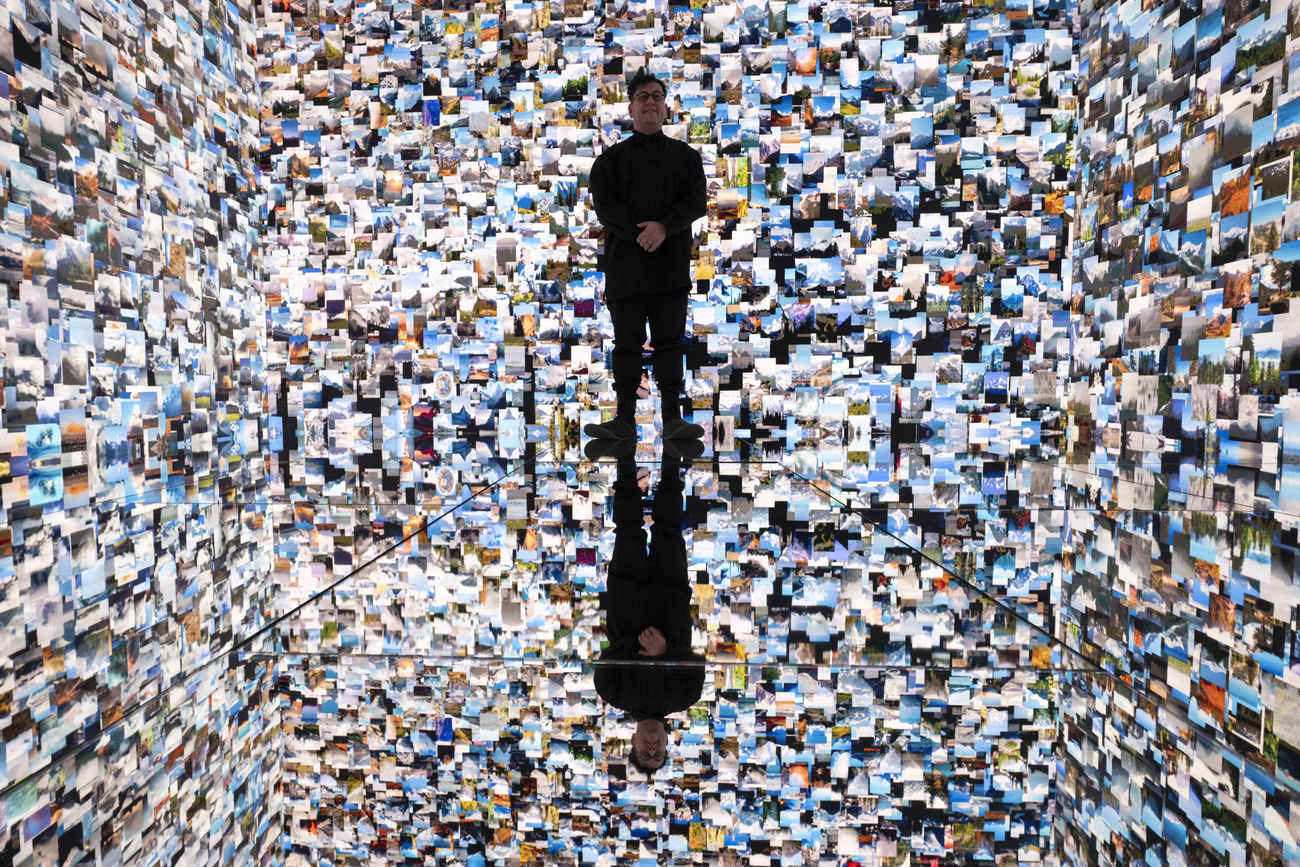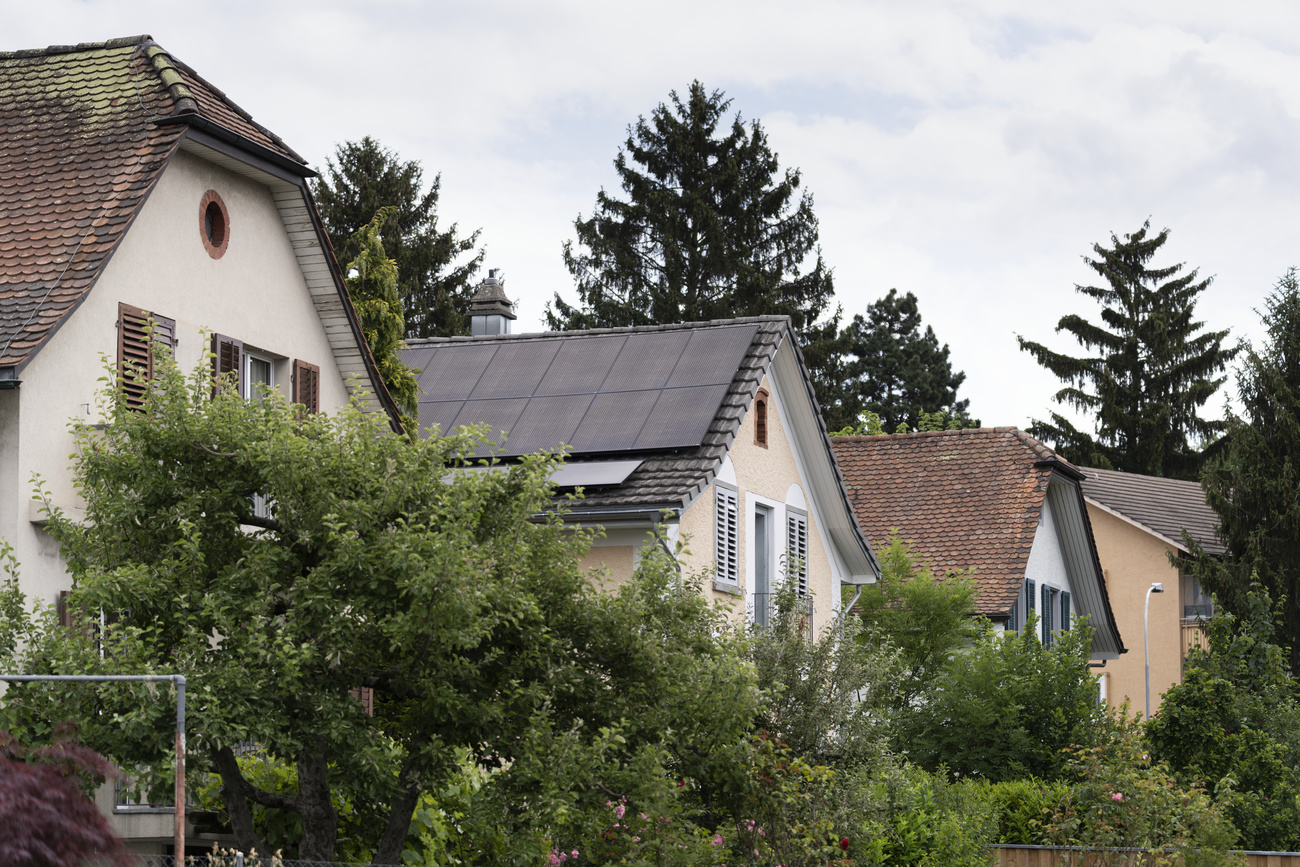
Rediscovering Switzerland’s concrete giants

Over 200 "man-made giants" lie hidden in the Swiss Alps. swissinfo's Simon Bradley went high up in search of one of them and its local treasures.
Perched almost 2,000 metres above sea level opposite Mont Blanc, Europe’s highest peak, Emosson dam in canton Valais is the second largest structure of its type in Switzerland.
Our journey begins way down in the Rhône valley. From here the Mont-Blanc Express has linked Martigny and Chamonix in France for a century, screeching and rattling its way up through vineyards and pine forests.
Clinging to the cliff, the train passes the village of Salvan, where Italian engineer Guglielmo Marconi first successfully tested his wireless telegraph, and Les Marécottes, renowned for its “wonderland zoo” of bears, wolves and wild marmots.
We get off in the village of Châtelard, but there’s still got some way to go until we reach the dam. Fortunately, the locals were smart enough to have built the steepest two-carriage funicular in the world (87 per cent gradient), whisking visitors up to 1,821 metres.
From there a small panoramic train takes us on another stomach-churning ride up the mountain, before an even smaller funicular finally deposits us in front of the concrete colossus.
You could hear a pin drop. Our party stands in awe as the behemoth, known as Emosson, slumbers after a summer spent collecting the alpine waters. Opposite, the snow-capped mountains of the Mont Blanc massif stand shoulder-to-shoulder.
Concrete cathedral
Emosson dam is a spectacular 180-metre-high curtain of smooth concrete framed by two rocky outcrops, holding back 225 million cubic metres of melted snow and rainwater.
“It’s the most beautiful dam in Switzerland,” gushes Bruno Gay des Combes, the dam manager, as he takes in the view.
“I love to say that to French visitors,” adds my private guide for the day with a cheeky grin.
As we descend deep into the giant’s innards, Gay des Combes explains how Emosson started operating in 1974 and is the second largest dam in the country after the Grande Dixence, a few kilometres away.
Run by Eléctricité Emosson, a joint French-Swiss company, the dam collects water from the mountains that straddle the border region. Four power plants, including two belonging to the Swiss Federal Railways, annually produce up to 1.25 terawatt-hours of power (billion kilowatts) – sufficient power for 40,000 homes.
Safe as houses
Emosson is a double-arch dam, with its design forcing the weight of the water against the sides of the valley.
It is regularly monitored, points out Gay des Combes. So-called “pendulums” are used to measure the tiniest of movements and warn in case of major variations.
We are now 160 metres below the dam crest, surrounded by over a million cubic metres of concrete. I’m starting to feel slightly claustrophobic and in need of some fresh mountain air.
“The wall can move some seven or eight centimetres when it is full,” says the dam manager. I have visions of surfing on icy melt water down to Martigny. “But it’s perfectly safe, of course,” he hastens to add. Even the last earthquake – 4.9 on the Richter scale last year – failed to shake the man-made giant.
Discoveries
Back up top I take out my guidebook, published recently by the electricians’ association of western Switzerland. It proposes a series of walks and activities around 50 Swiss dams.
With so much to do and see, there’s no time to hang around: time is money I say. “No, water is money,” Gay des Combes corrects me.
The dams are certainly an excellent excuse for discovering some of the region’s other hidden treasures. One of these that should not be missed is the path that climbs above Emosson through the Veudale gorge, taking you back in time – some 230 million years, no less.
Reaching the top at 2,400 metres below the Aiguille-du-Charmo, the hardy visitor is rewarded with the sight of over 800 perfectly preserved dinosaur tracks, discovered in 1976 by a French geologist.
And perhaps some time in the future, other scientists will ponder over the concrete giant in the valley below.
swissinfo, Simon Bradley
Total Swiss electricity production in 2004 was 63.5 TWh, of which hydropower accounted for 55% and nuclear energy 40%.
The Swiss electrical industry, while part of the European network, is largely self-sufficient.
However, Switzerland is a major trading centre, with annual electricity imports and exports often totalling up to ten times the European average.
Switzerland has 217 dams; 84% of which produce hydropower.
Four dams are over 200 metres high, namely the Grande Dixence (285 metres), Mauvoisin (250 metres), Luzzone (225 metres) and Contra (220 metres).
The oldest dams date back to the 19th century, though most of the biggest dams in Switzerland were built between 1950 and 1970.
Thanks to its topography and high levels of annual rainfall, Switzerland has ideal conditions for the development of hydroelectric power.
At the beginning of the 1970s, hydropower accounted for almost 90% of domestic electricity production, but this figure fell to around 60% after Switzerland’s nuclear power plants were commissioned, and has remained at that level since 1985.
But hydroelectric power remains Switzerland’s most important domestic source of renewable energy.

In compliance with the JTI standards
More: SWI swissinfo.ch certified by the Journalism Trust Initiative










































You can find an overview of ongoing debates with our journalists here . Please join us!
If you want to start a conversation about a topic raised in this article or want to report factual errors, email us at english@swissinfo.ch.